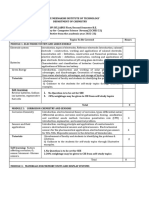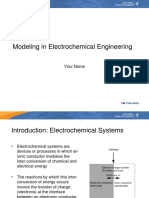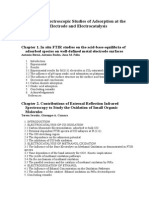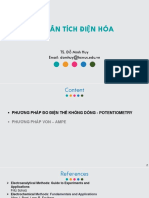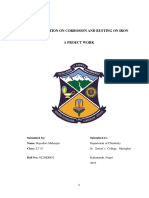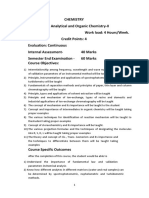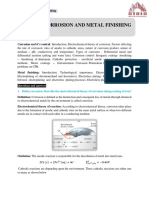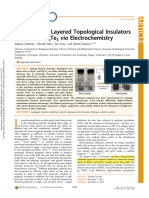Visvesvaraya Technological University, Belagavi.
Model Question Paper for Chemistry for computer science & Engineering stream
First/Second Semester B.E. Degree Examination Engineering Chemistry (22CHES12/22)
USN:
Subject Title: Chemistry for computer science & Engineering stream 22CHES12/22
TIME: 03 Hours Max. Marks: 100
Note: Answer FIVE full questions, choosing one full question from each module
Marks
MODULE 1
Explain the working principle of Conductometric sensors
a 7
(conductometry), and Optical sensors (colorimetry)
What are Electrochemical Sensors? Explain its application
1 b 7
in the measurement of Dissolved Oxygen (DO)
Describe the construction, working and applications of
c 6
Lithium-ion batteries and mention any four applications
OR
Explain the working principle of Electrochemical sensors,
a 6
and mention its applications
Describe the application of Electrochemical gas sensors in
2 b 7
sensing SOx and NOx
What are Quantum Dot Sensitized Solar Cells (QDSSC’s)?
c 7
Explain the working Principle, Properties and Applications.
MODULE 2
Explain the types of organic memory devices by taking p-
a 7
type and n-type semiconductor materials
What are photoactive and electroactive materials and
3 b 6
explain their working principle in display system
What are nanomaterials? Explain any four properties of
c 7
Polythiophenes (P3HT) suitable for optoelectronic devices.
OR
What are Memory Devices? Explain the Classification of
a 6
electronic memory devices with examples
4 Mention any four properties and applications of LC-
b 7
displays
c Mention any four properties and applications of QLED 7
MODULE 3
Define metallic corrosion? Describe the electrochemical
a 7
theory of corrosion taking iron as an example.
5 Explain: (i) Differential metal corrosion & (ii) Water-line
b 6
corrosion
c Describe galvanizing and mention its applications. 7
OR
� Explain: i) corrosion control by Anodization & ii)
a 6
Sacrificial anodic method.
Explain the construction and working of Calomel
b 7
electrode
6 What is CPR? A thick brass sheet of area 400 inch 2 is
exposed to moist air. After 2 years of period, it was found
c to experience a weight loss 375 g due to corrosion. If the 7
density of brass is 8.73 g/cm3. Calculate CPR in mpy and
mmpy.
MODULE 4
A polydisperse sample of polystyrene is prepared by
mixing three monodisperse samples in the following
proportions. 1g of 10000 molecular weight, 2g of 50000
a 7
molecular weight and 2g of 100000 molecular weight.
Determine number average and weight average molecular
7
weight. Find the index of polydispersity.
Explain the synthesis of Polyacetylene and mention its
b 7
applications
Explain the generation of hydrogen by Alkaline water
c 6
electrolysis
OR
Describe the hydrogen production by photo catalytic
a 7
water splitting method.
8 Preparation, properties, and commercial applications of
b 7
Kevlar.
c Explain the construction and working of photovoltaic cells. 6
MODULE 5
Mention the sources of e-waste and explain the need for
a 7
e-waste management
9
b Explain the recycling of e-waste 7
c Explain the extraction of gold from e-waste 6
OR
Explain the ill effects of toxic materials used in
a 7
manufacturing electrical and electronic products
Explain the pyrometallurgical and direct recycling
10 b 6
methods.
Write a brief note on role of stakeholders for example;
c 7
producers, consumers, recyclers, and statutory bodies.


















